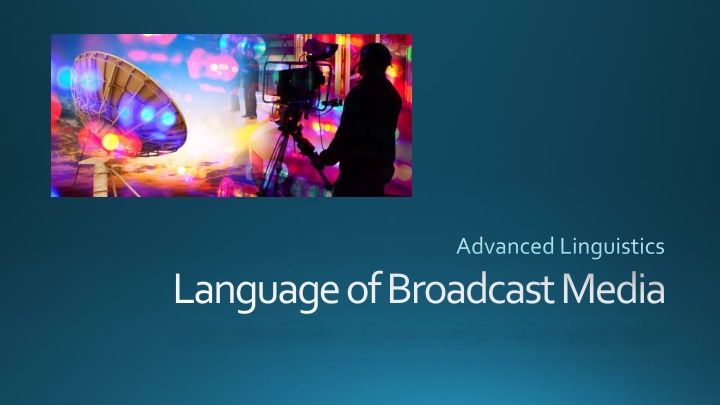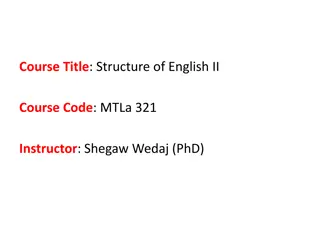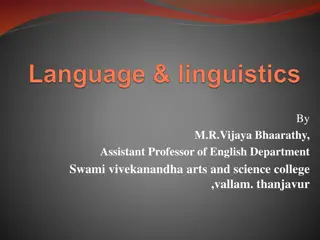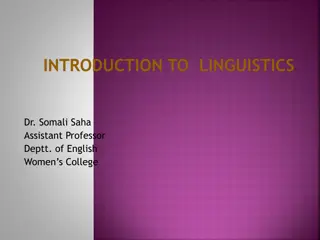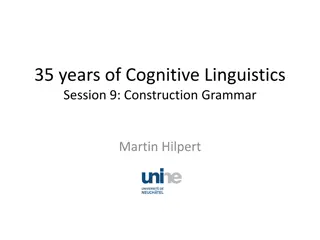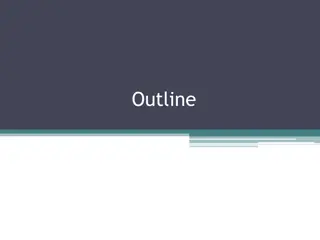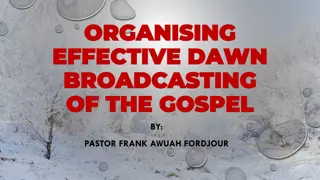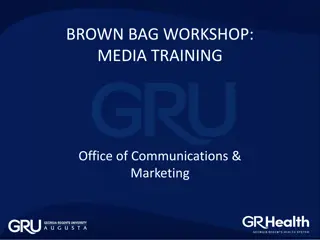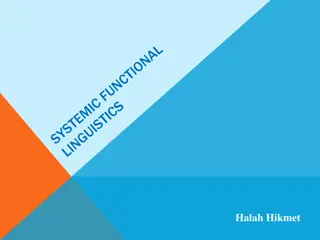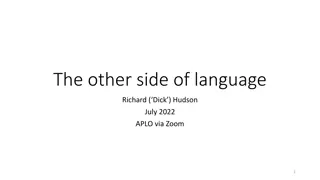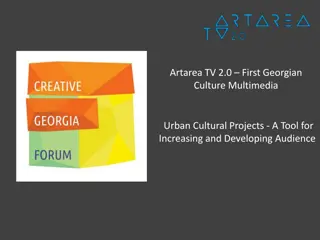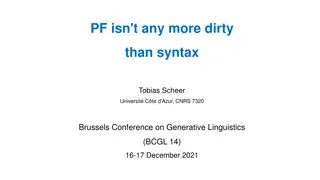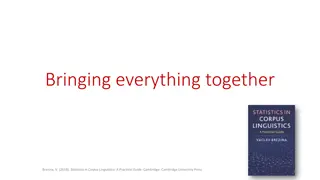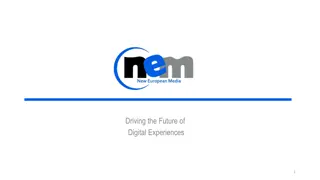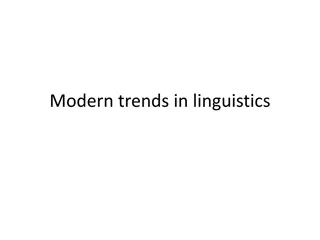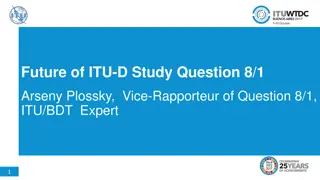Insights into Advanced Linguistics and Media Broadcasting
Delve into the language of broadcast media, exploring features of TV news broadcasts, conditions of news interview discourse, types of interviews, and radio phone-in discourse. Learn about the intricacies of language used in different media contexts and the role of communication in broadcasting.
Download Presentation

Please find below an Image/Link to download the presentation.
The content on the website is provided AS IS for your information and personal use only. It may not be sold, licensed, or shared on other websites without obtaining consent from the author.If you encounter any issues during the download, it is possible that the publisher has removed the file from their server.
You are allowed to download the files provided on this website for personal or commercial use, subject to the condition that they are used lawfully. All files are the property of their respective owners.
The content on the website is provided AS IS for your information and personal use only. It may not be sold, licensed, or shared on other websites without obtaining consent from the author.
E N D
Presentation Transcript
Advanced Linguistics Language of Broadcast Media
Defining broadcasting Broadcasting the distribution of audio and/or video content or other messages to a dispersed audience via any electronic mass communications medium (typically radio and television).
Features of TV News Broadcasts: Present verb tense e.g. Heavy snowfalls are only adding to the risks. Spatial deixis e.g. Relatives of those who died in the accident have also been arriving here. Demonstrative reference e.g. This man hadn t been drinking Now watch this clip and try to identify additional features (don t worry about terminology): https://www.youtube.com/watch?v=6I7DlZiqHUE
Conditions of News Interview Discourse: Designed for an overhearing, non c0-present audience Designed to maintain interviewer neutrality towards interviewee statements (institutional constraints)
Types of Interview: Expert Interview: a professional expert interviewed in relation to a technical or semi-technical topic of the news. Key features are: reformulations as a sign of accuracy, interviewer affiliating with interviewee, few overlaps. Experiential Interview: an ordinary member of the public interviewed in relation to their personal reactions to news issues or events. Key features are: short, simple directed questions to interviewee on thoughts/feelings, no overlaps/challenging reformulations. Affiliative Interview: an accredited journalist interviewed by the news presenter of the same institution in relation to a news item. Key features are: markers of personal point of view (I think), adverbial expressions denoting modality (perhaps), hypothetical conditions denoting modality (If he had turned up). In groups, write out an interview based on the type you are assigned making sure to include the relevant features.
Radio Phone-In Discourse: Opening: name(Terezais calling), location (from Cardiff), greeting (good morning) Establishing agendas/positions:presenter is responsible for ensuring caller stays on topic e.g. To back to your original point Multiple turns: these are shaped by the presenter into a coherent, building narrative Conveying opinions: experts speak from known affiliation or institutional position (legitimacy) whereas lay speakers/ordinary members of the public do discursive work to contextualise their opinions by establishing relevant identities (experience) Sign-off:presenter is responsible for closing the exchange and will always have the last word e.g. Thanks for your opinion, Ian. Bye! Now
Experience in media: Get involved with Student Media at Godalming (we have a student magazine and a radio station) Get involved with Student Media at university: https://www.youtube.com/watch?v=_D- 52ZPZGTU&feature=youtu.be This might lead to opportunities working with professional bodies like this: https://www.youtube.com/watch?v=HL3LD3eC-No Get involved with local media such as community radio stations.
